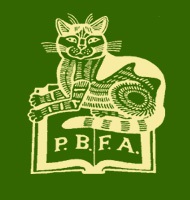Rare and Antique Books feature many iconic illustrated children’s books and one of the most influential of the characters is the Golliwogg created by Florence Upton. Clearly the character is now culturally controversial, yet in it’s time the golliwog was initially created as an innocent and playful character which inspired the creation of a popular children’s toy throughout most of the 20th century. Who was the illustrator and creator of this children’s character?
The story of Florence Upton
Florence Upton was born in Flushing, New York on 22 February 1873 to British parents who had recently emigrated to America. She was the second of four children born into a creative and slightly eccentric household. In 1884, the family moved to central Manhattan near The National Acadamy of Design where free instruction was offered to anyone who could qualify. Her father enrolled Florence for evening class tuition in art where her artistic skills were nurtured. The premature death of her father in June 1889 resulted in a loss of a steady income and at the age of 16 Florence secured work as a professional illustrator of novels or books of short stories.
The Upton family finances finally stabilised and the family were able to visit Bertha’s relatives in Hampstead, London. Florence’s established reputation from her published work in New York, meant she was able to secure employment with London publishers and she remained in the England whilst her family returned to New York. Florence’s skill in illustrating developed as she enlisted in further art training and experimented with her ideas.
The fascination with children’s stories
Florence Upton started to consider working with children’s books and was inspired by her “penny wooden” dolls and an old childhood toy named “Golliwogg”, a toy she had played with as a small child in New York. The then-nameless “Negro minstrel doll” was treated roughly by the Upton children yet in her stories she developed his character into a friendly helpful toy. She developed the illustrations and character and worked with her mother, Bertha who wrote the verses, to produce their first story, “The Adventures of Two Dutch Dolls and a Golliwogg”. This was in 1894 published by Longmans, Green & Co for the Christmas publication of 1895.
Florence’s Golliwogg proved to be highly popular in the time and Florence and her mother went onto to produce thirteen adventures until changing tastes made “Golliwogg in the African Jungle” the last in the series in 1909.
Influenced by Global travelling
Whilst in London, Florence Upton continued to provide illustrations for The Strand, the Idler and Punch magazine. After three years of work, she returned to New York to further her studies at the Art Students League and then in Paris and Holland. In 1906 Florence returned to London where she continued her career as an artist exhibiting in the Royal Academy, London. Unable to serve in the First World War due to ill health, Florence assisted the war effort by donating her dolls and original Golliwogg drawings for the Red Cross. The monies raised bought an ambulance named “Golliwogg” which went to the Front and served in France.
Florence continued working as an artist and illustrator, mainly of portraits, until her unfortunate death after abdominal surgery in 16 October 1922 at the age of 49. Her legacy of the Golliwogg toys inspired by her character are now displayed in the Museum of Childhood at the Victoria and Albert Museum.
A twist on the Golliwogg name
Unfortunately Florence Upton did not trademark her character and its name, spelled “golliwog”, became the generic name for dolls and images of a similar type. Recognising a large and profitable market, many toy companies took advantage of the popularity of the books and manufactured the doll. Other writers and illustrators took equal advantage, many changing the nature of the series. For example, the character was developed by Enid Blyton, often as a villain and sometimes as heroes, yet Upton’s Golliwogg was jovial, friendly and gallant.
The character exemplifies racial disharmony and is clearly socially inappropriate in modern times and so the character remains controversial today- little did Florence know when she created the image and character of the Golliwogg that it would play such an influential part in social history and children’s play through most of the 20th century.
Rare and Antique Books have several of the landmark Golliwogg books by Florence Upton which would add to any collection of socially significant children’s books.

